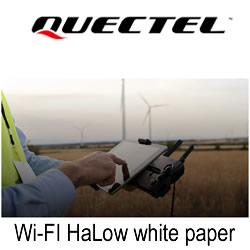Rotor Technologies and AG-NAV Bring Automated Aerial Application to Helicopters
The two companies have demonstrated an integrated automated aerial application system that allows users to fly Rotor’s Sprayhawk agricultural UAV, a 110-gallon capacity unmanned Robinson helicopter, using AG-NAV’s Guia Platinum navigation system.
Nashua, New Hampshire, USA and Barrie, Ontario, Canada (October 21, 2024): Rotor Technologies, Inc., the manufacturer of the largest spray drone in the world, is partnering with AG-NAV Inc., a leader in precision navigation and flow control technology to bring automated aerial application to the Sprayhawk unmanned helicopter.
The two companies have demonstrated an integrated automated aerial application system that allows users to fly Rotor's Sprayhawk agricultural UAV, a 110-gallon capacity unmanned Robinson helicopter, using AG-NAV's Guia Platinum navigation system.
AG-NAV will be the exclusive provider of agricultural navigation solutions on Rotor's 2025 Model Year Sprayhawk. Sprayhawks will be equipped with AG-NAV's advanced navigation and flow control technology as standard, including variable rate spray control equipment onboard and a Guia Platinum navigation terminal in the ground control station.
"The integration of AG-NAV systems into the Sprayhawk brings precision agriculture to our aerial application customers," said Rotor Product Manager Charlotte Keys. "With access to AG-NAV's industry-leading navigation and mission management systems, Sprayhawk operators will be able to seamlessly manage their jobs and workflows, perform in-flight spray controls just like in their manned aircraft, and optimize efficiency with precision flow control."
The partnership will give Sprayhawk operators access to AG-NAV's advanced mission planning software, AgMission. AgMission enables sprayers to create safe and efficient spray patterns for any type of field, input custom settings to build operations to their specific needs, and use advanced data analysis on past jobs and spray routes. This collaboration is a significant step forward in supporting aerial applicators with their precision agriculture needs.
"At AG-NAV our mission is to always innovate as well as focus on pilot safety," said AG-NAV's Landon Ramirez. "So when we heard what Rotor were doing, we were really excited to work with them to further improve pilot safety as well as revolutionize the aerial application industry."
The 2025 Model Year Sprayhawk is currently open for pre-orders for customers in the U.S. and Brazil for delivery in the second half of 2025, with introductory pricing available until December 15, 2024.
Rotor and AG-NAV are displaying at the NAAA convention in Fort Worth, November 18-21. The companies invite aerial applicators and agricultural partners to visit booths 1523 (Rotor) and 1600 (AG-NAV).
About the companies
Rotor Technologies, Inc. is a manufacturer of unmanned aerial vehicles based in Nashua, NH, specializing in heavy lift drones for agricultural and utility applications. To place an order or for more information about Sprayhawk, visit https://rotor.ai/contact or contact Rotor's Sales team at (866) 6-GET-UAV.
AG-NAV Inc. is a leading provider of advanced navigation systems and flow control solutions for agriculture, forestry, and other aerial applications based in Barrie, Ontario, Canada. With over 20 years of experience, Ag-Nav specializes in cutting-edge technology designed to enhance precision, efficiency, and safety for operators worldwide.
Featured Product

How to overcome GNSS limitations with RTK correction services
Although GNSS offers ubiquitous coverage worldwide, its accuracy can be hindered in some situations - signals can be attenuated by heavy vegetation, for example, or obstructed by tall buildings in dense urban canyons. This results in signals being received indirectly or via the multipath effect, leading to inaccuracy, or even blocked entirely. Unimpeded GNSS positioning in all real world scenarios is therefore unrealistic - creating a need for supporting technologies, such as real time kinematic (RTK) positioning and dead reckoning, to enable centimeter-accuracy for newer mass-market IoT devices.
